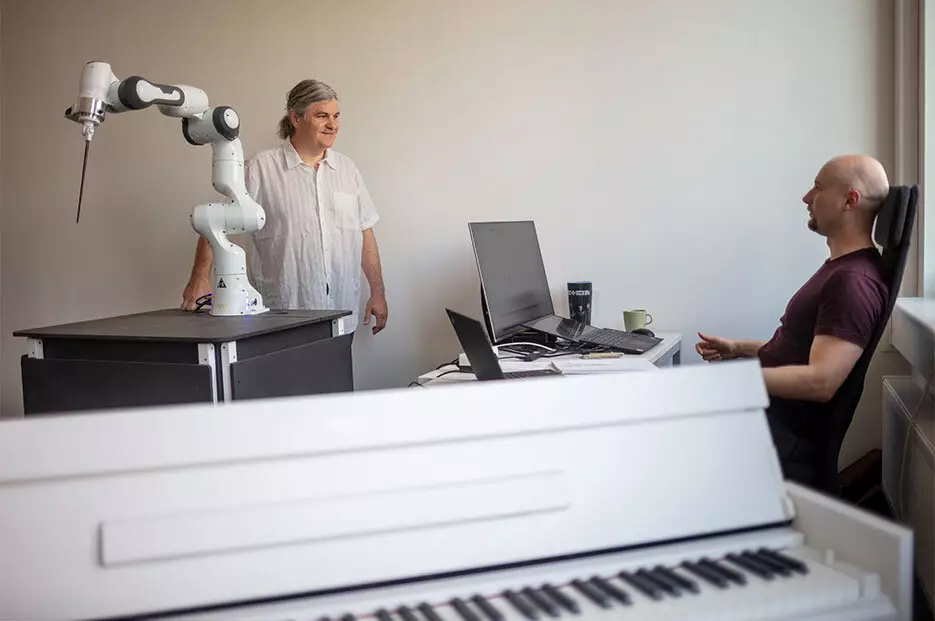In a groundbreaking show demonstrating the intersection of technology and artistry, a three-armed robot has made its musical debut in Dresden, Germany, by directing the esteemed Dresdner Sinfoniker orchestra. This innovative contraption, resembling a mechanized maestro, was designed to emulate the nuanced gestures of a human conductor, effectively bringing a unique flavor to orchestral performances. With batons that evoke comparisons to “Star Wars” light sabers, the robot stood at the helm of innovative compositions specifically crafted to align with its capabilities, marking a significant moment in the collaboration between art and robotics.
The robot’s programming encompassed an array of sophisticated skills, such as tracking beat time and signaling dynamics, which both rely heavily on nuanced movements. Each of its three arms operates independently, a feat that allowed an intricate orchestration of sounds during the performance of “Semiconductor’s Masterpiece,” an original piece by composer Andreas Gundlach. These capabilities not only enhanced the performance; they allowed for a synchronization of the orchestral sections that would be a challenge for any human conductor, thereby proving the robot’s versatility in a live musical setting.
Over the course of two years, researchers and developers at Dresden’s Technical University dedicated their efforts to refining this robotic conductor. Their goal was to create a “cobot”—a collaborative robot designed not to supplant human musicians, but to work alongside them. Gundlach emphasized the enlightening experience of teaching the robot how to conduct, likening it to peeling back layers of understanding about human creativity and expression. This arduous process highlighted the uniqueness of the human touch, accentuating how a conductor’s aesthetic movements play a crucial role in shaping the orchestral experience.
While the successful debut of this robotic conductor ignites excitement, it also raises pertinent questions regarding the role of technology in artistic domains. Can a machine, no matter how sophisticated, truly encapsulate the essence of conducting? Or does the mechanical nature of robotics create a disconnect from the emotional nuances that human conductors bring to their performances? The success of the robotic conductor in performing compositions particularly designed for its strengths suggests that while it may not replace human conductors, it opens up a new avenue for collaborative creativity.
In a world where advancements in artificial intelligence are rapidly evolving, the integration of such technology within fields traditionally governed by human touch illustrates both the potential and the challenges ahead. The music world is bound to witness further explorations in this area, leading to potentially unprecedented performances that blend human and robotic artistry in harmonious ways.
As innovative artists like Gundlach continue to explore the fusion of robotics and musical expression, the possibilities appear endless. The initial successes of the robotic conductor herald a future rife with collaborative efforts between humans and machines, one where art evolves hand-in-hand with technology. This uncharted territory invites both excitement and skepticism, prompting us to ponder where the human experience fits within this dynamic interaction. Ultimately, the Dresden robot and the evolution of orchestral direction may redefine our understanding of collaboration in the arts, opening gateways to new forms of creative expression that challenge our notions of musicianship and artistry.


Leave a Reply